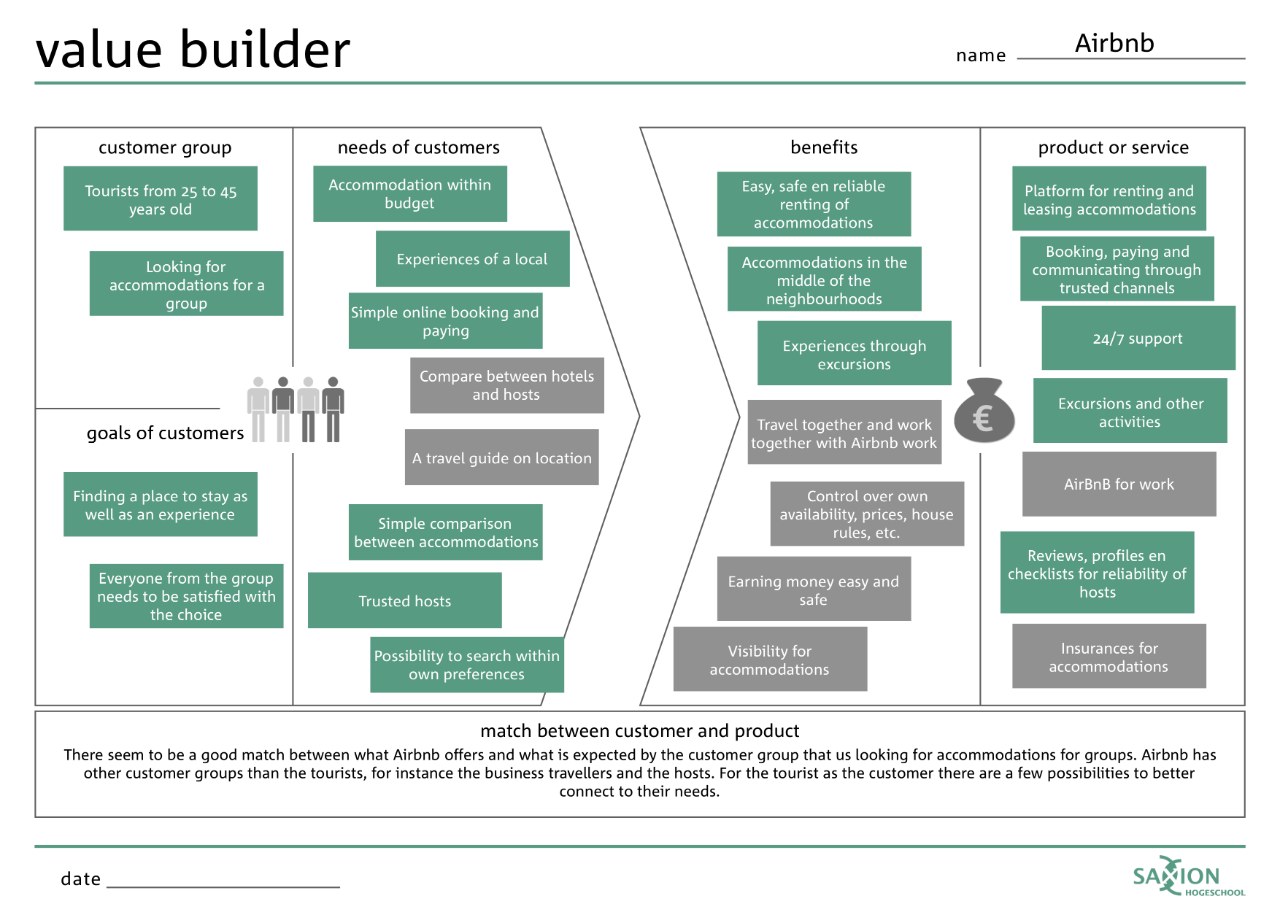Value Builder

Tips for use
You can use the Value Builder by yourself or in a group, such as colleagues. When using the tool with colleagues make two groups. One group fills out the customer side (left) of the canvas, the other group works on the offering side (right). With everything filled out, get together with the entire group to see if there is (sufficient) overlap between customer demand and the offering.
Download the Value Builder canvas and print it on a large piece of paper for use during such a session. To see how you might use the Value Builder in practice, you can download the example of Airbnb.
How to use
The insights that the Value Builder provides help you to make your product or service more attractive for the market. The Value Builder is used for one customer group and one product or service at the same time. First fill in the customer side (left) of the canvas and then the offering side (right).
Step 1: identify your customer group
Different customers can have different wishes. To see whether your product adds value, be as specific as possible when choosing a customer group. A customer group is a group with matching characteristics and wishes. If you want to take multiple customer groups into account, make multiple Value Builders.
Choose and describe your customer group. Your customer group may consist of consumers or companies.
- If your customer group consists of companies, describe their size, sector and offering. For example, medium-sized companies that develop and sell specialist wheelchairs.
- If your customer group are consumers, describe the age, goals, gender, level of education or interests. For example, women between the ages of 25 and 40 with curly hair.
Step 2: determine the goals of your customer group
A customer always has a purpose when buying a product or service. A goal could be, solving a problem or performing a task.
- For example, in the case of the wheelchairs manufacturer, the goal is to sell a wheelchair that is as comfortable as possible.
- For example, in the case of women with curly hair, the goal is to get their hair in check.
Step 3: describe the wishes of your customer group
Customers have conditions for achieving the goal. Get into the head of your customer. Consider their wishes on their way to achieving the goal. Which results will make them happy? What do they expect from your product or service? What do your customers dream of?
- For example, in the case of the wheelchairs manufacturer, what helps them to develop a wheelchair that is as comfortable as possible?
- For example, in the case of women with curly hair, how would they restrain their curls? How much time and product do they want to use to achieve perfect hair?
Step 4: describe your product or service
Choose one product or service that you offer and describe it. Also describe any supporting products or services that belong to this product or service. What does the customer get when they buy form your company? In the case of a product, what does the customer receive physically? In the case of a service, what does it help them with?
Step 5: determines the benefits of your product or service
Then, consider the benefits of your product or service. What does it bring to your customer? What solutions does it offer? How does it help your customer? Benefits can relate to performance, experience, cost savings or convenience. Benefits can also be emotional, think back to the lady with curly hair, a shampoo that keeps her hair in check will make her feel confident.
Step 6: analyse the match between customer and product
Put the two halves of the canvas together again. Determine whether the wishes of your customer match with what your product or service has to offer. If there is only a partial match, consider whether there are benefits you could add to better fit customers’ needs.